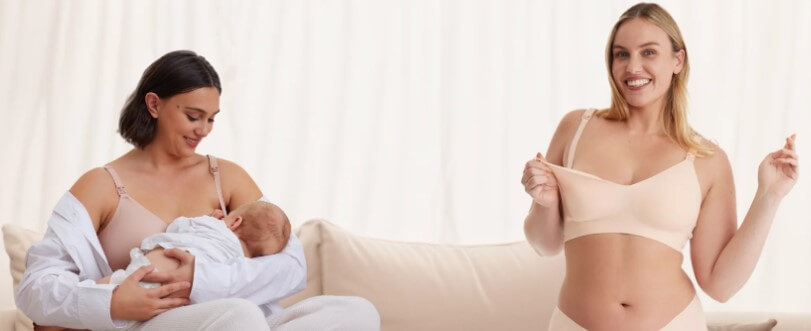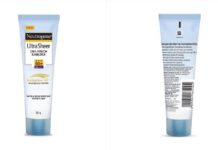If you’re breastfeeding (or planning to), you might be wondering what it means for your breasts and whether skipping a bra could lead to sagging. It’s totally normal to worry about these things, but the truth is, most of the changes to your breasts actually start during pregnancy, not breastfeeding itself. In this article, we’ll break down what really affects your breasts during this time, plus give you some easy tips for keeping them looking and feeling great.
How Breastfeeding May Affect Breast Aesthetics
Breastfeeding is a natural and beneficial practice with well-documented health advantages for both infants and mothers. However, many women worry about its potential impact on breast aesthetics, particularly the risk of sagging, medically known as breast ptosis. Research and studies show that breast aesthetics are primarily influenced by factors other than breastfeeding itself.
Breast changes begin early in pregnancy, not necessarily due to breastfeeding. Hormones increase breast size as milk-producing glands expand, causing the ligaments and skin around the breasts to stretch. After breastfeeding ends, breast tissue shrinks, which can lead to a looser appearance if the skin and ligaments don’t fully retract. This phenomenon is often mistaken as being directly caused by breastfeeding.
Major Factors Affecting Breast Sagging
Research identifies several key risk factors for breast sagging that are unrelated to breastfeeding:
Age: As women age, skin naturally loses elasticity, and the ligaments that support breast tissue become weaker.
Number of Pregnancies: Each pregnancy contributes to the stretching of breast tissue, and more pregnancies generally lead to more pronounced sagging.
Body Mass Index (BMI): A higher BMI can result in more substantial breast tissue, which may strain skin elasticity.
Smoking: Smoking negatively affects elastin, a protein that helps skin remain firm and youthful, accelerating the appearance of sagging.
Prepregnancy Breast Size: Women with larger breasts before pregnancy may experience more noticeable sagging due to the gravitational pull on the breast tissue.
Will my breasts sag if I don’t wear a bra during breastfeeding?
Not wearing a bra during breastfeeding is unlikely to be a direct cause of breast sagging or “ptosis.” However, wearing a supportive bra can help alleviate some of the stress on the breast tissue and skin, especially during times when breasts may be fuller and heavier due to milk production. Here’s a breakdown of how going braless might affect breast aesthetics and what other factors are at play.
A bra’s primary function is to offer external support to the breasts, reducing the pull on the skin and ligaments, particularly in women with larger breasts. During breastfeeding, when breasts can fluctuate in size due to milk production and feeding frequency, a bra provides added stability. However, wearing a bra doesn’t prevent sagging altogether—it merely reduces the strain on the skin and tissue in the short term.
How to avoid breast sagging during breastfeeding
Breast sagging (ptosis) during and after breastfeeding is a common concern for many women. While breastfeeding itself is not a direct cause of sagging, other factors associated with pregnancy, body changes, and lifestyle can contribute. Here are effective strategies to help minimize breast sagging during and after breastfeeding.

Wear a Supportive Bra
A well-fitted, supportive bra provides essential support, especially when breasts feel heavier due to milk production. A good bra helps reduce strain on the skin and ligaments, preventing them from overstretching. Maternity bras offer added comfort and support during pregnancy, accommodating growth with broader straps, extra hooks, and soft fabrics. Nursing bras are designed for breastfeeding, featuring detachable cups for easy feeding and stretchable material that adapts to size changes throughout the day. Both types are especially beneficial for larger breasts or during high-impact activities, helping to prevent overstretching and support breast firmness.
Maintain Good Posture
Slouching or poor posture can put additional strain on the chest muscles and ligaments. Holding your back straight and keeping your shoulders back can create a more lifted look for the breasts. Proper posture also helps distribute breast weight more evenly, reducing sagging potential. Practicing postural exercises like yoga can be beneficial.
Breastfeed on Demand
Breastfeeding regularly on demand prevents breasts from becoming overly engorged. Engorgement stretches the skin and can make the breasts feel heavy, which might contribute to sagging if prolonged. If your breasts do feel engorged and your baby is not ready to feed, consider pumping to relieve the pressure and maintain skin integrity.
Gradual Weaning
Gradual weaning allows the breasts time to adjust and for fat tissue to redeposit naturally. This slower transition helps the skin and breast tissue recover more effectively, reducing the abrupt changes that can make sagging more apparent.
Avoid Rapid Weight Loss
Avoid losing weight too quickly after pregnancy. Rapid weight fluctuations can cause the skin around the breasts to lose elasticity. Aim for gradual weight loss through a balanced diet and exercise, giving the skin time to adjust and adapt to changes.
Stay Hydrated
Drinking plenty of water helps keep your skin hydrated and more elastic. Skin elasticity plays a significant role in maintaining firmness, so aim for at least eight glasses of water daily to keep skin healthy.
Eat a Balanced Diet Rich in Skin-Friendly Nutrients
A healthy diet supports skin elasticity and helps maintain overall breast health. Nutrients such as vitamins C and E, collagen, and healthy fats are essential for skin strength and elasticity. Include foods rich in these nutrients, such as fruits, vegetables, lean proteins, nuts, and whole grains.
Massage with Moisturizers or Natural Oils
Regularly massaging your breasts with a gentle moisturizer or natural oil, like olive or almond oil, can help improve blood flow and support skin elasticity. Massage also encourages tissue flexibility and can promote a firmer appearance.
Avoid Smoking
Smoking is known to degrade elastin and collagen in the skin, leading to premature aging and sagging. Avoiding smoking during and after pregnancy will help your skin remain firm and youthful, including the skin around the breasts.
Engage in Chest Exercises
While the breasts themselves don’t contain muscle, strengthening the underlying pectoral muscles can help give the chest area a more lifted look. Exercises such as chest presses, push-ups, and dumbbell flies strengthen the chest muscles, which in turn can make breasts appear perkier. Consult your healthcare provider before starting any new exercise routine post-pregnancy.
FAQs
What is the difference between a nursing bra and a maternity bra?
A maternity bra is designed for comfort and support during pregnancy, accommodating the growth in breast size. A nursing bra is intended for breastfeeding mothers, with features like detachable cups for easy access. Both provide support, but nursing bras are more suitable for the breastfeeding period.
Does breastfeeding make breasts asymmetrical?
Breastfeeding can sometimes lead to temporary asymmetry if a baby prefers one breast over the other, causing one breast to produce more milk and potentially look larger. This often resolves naturally after breastfeeding ends and milk production stabilizes.
Is there anything I can do to firm up my breasts post-breastfeeding without surgery?
Yes, you can try home remedies and lifestyle changes, such as:
- Chest Exercises: Exercises like chest presses and push-ups to strengthen the pectoral muscles.
- Alternating Hot and Cold Showers: Improves skin elasticity by alternating temperature.
- Breast Massage: Helps improve blood flow, which can support skin health.
When will my breasts return to their pre-pregnancy size after breastfeeding?
Many women find that their breasts gradually return to their pre-pregnancy size a few months after breastfeeding ends, usually within 3 to 6 months. However, the shape and firmness may vary depending on factors like age and skin elasticity.
Does Using a Breast Pump Cause Breast Sagging?
Using a breast pump does not directly cause or prevent breast sagging. Breast sagging mainly results from changes during pregnancy, aging, weight fluctuations, and other factors. The primary purpose of a breast pump is to help mothers collect milk, alleviate breast engorgement, and maintain milk supply.
Can a Breast Pump Help Prevent Engorgement-Related Stretching That Might Lead to Sagging?
Yes, using a breast pump can help relieve engorgement, which might contribute to maintaining breast appearance. Severe engorgement stretches the skin and ligaments in the breasts, potentially leading to sagging if prolonged. If your breasts feel full and your baby is not ready to feed, a breast pump can relieve this pressure, preventing excess skin stretching.
When Is Using a Breast Pump Beneficial for Breast Health?
A breast pump can be beneficial in the following situations:
- When your baby isn’t feeding or you can’t breastfeed regularly, a pump can relieve uncomfortable fullness.
- Regular pumping can prevent blockages that could lead to mastitis (breast inflammation).
- A breast pump helps maintain milk supply when direct breastfeeding isn’t possible, preventing rapid breast tissue shrinkage.
Can a Breast Pump Help with Breast Symmetry?
If you notice that one breast produces more milk than the other, you can use the pump on the smaller-producing breast for additional stimulation, which may help improve symmetry. However, mild asymmetry is normal, and breasts often regain a balanced appearance naturally after breastfeeding ends.









